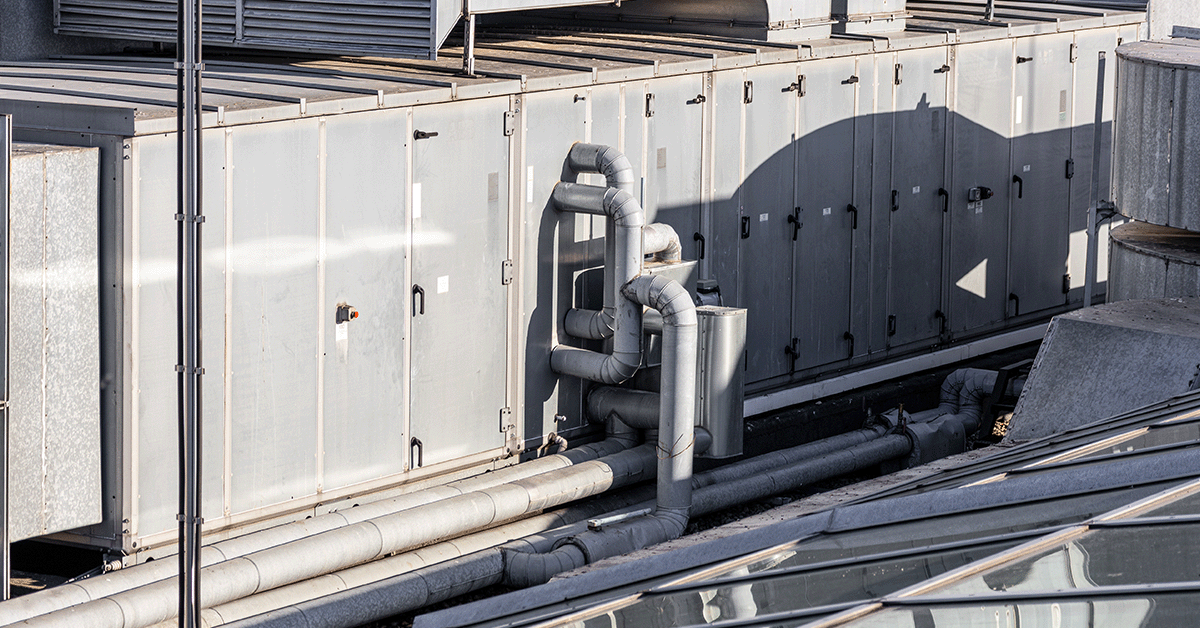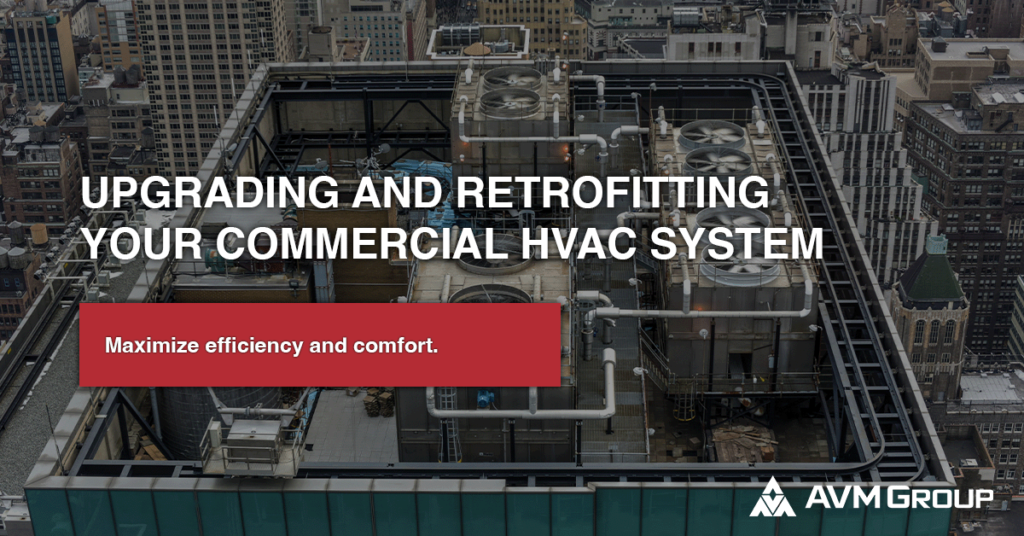*This post is part of a much larger pillar blog: The Ultimate Commercial HVAC Guide
Table of Contents
ToggleIntroduction
Deciding to retrofit or upgrade HVAC systems in commercial buildings is not just about replacing old units with newer ones.
It’s about maximizing efficiency, comfort, and sustainability while minimizing operational costs and environmental impact.
With a long track record of commercial HVAC experience, our team knows that the right HVAC upgrades can transform a building’s performance, bringing significant benefits to owners, operators, and occupants alike.
In fact, if you’d like a much more thorough explanation into how these commercial HVAC systems actually work, check out this article.
Let’s dive into what it means to upgrade and retrofit HVAC systems in commercial buildings and explore the best practices for achieving the most value from these investments.
Up first: why would you even want to upgrade or retrofit your existing HVAC system?
Why Retrofit or Upgrade HVAC Systems?
Upgrading or retrofitting HVAC systems can provide several advantages for commercial buildings. These include (but are of course not limited to):
- Enhanced Energy Efficiency: Modern HVAC systems are designed to consume less energy while delivering better performance. Upgrading can help reduce energy bills significantly.
- Improved Indoor Air Quality (IAQ): Advanced HVAC systems have better filtration and ventilation, which enhances IAQ—crucial for the health and productivity of occupants.
- Regulatory Compliance: Many older HVAC systems do not meet current energy efficiency standards or environmental regulations. Upgrading ensures compliance and avoids potential fines or legal issues.
- Extended System Life: Retrofitting can extend the life of an existing HVAC system by addressing specific inefficiencies without the need for a full replacement.
- Increased Property Value: Energy-efficient buildings are more attractive to potential buyers or tenants. An upgraded HVAC system can boost a property’s marketability and value.
Now that we’ve talked about why you might want to upgrade or retrofit, let’s look at some of the key things you need to keep in mind before you decide you want to upgrade.
Key Considerations for HVAC Upgrades
When it comes to upgrading HVAC systems in a commercial setting, several factors must be considered to ensure optimal outcomes:
Assessing the Current HVAC System
Before deciding on an upgrade, conduct a comprehensive assessment of the existing HVAC system. This includes:
- Evaluating the system’s age, efficiency, and condition.
- Identifying any recurring issues, such as uneven heating/cooling, excessive noise, or poor air quality.
- Reviewing energy consumption patterns to pinpoint inefficiencies.

A professional energy audit is often the best starting point. This provides a clear picture of where improvements can be made and helps in setting priorities for upgrades. These can be completed by a professional mechanical systems company.
Once you finish assessing what you currently have in your building, you’ll want to coordinate with your facilities manager or the contractor that originally built your facility.
Understanding Building Requirements
Every building has unique HVAC needs depending on its design, usage, and occupancy levels. A thorough understanding of these requirements is crucial for selecting the right upgrade options. Key considerations include:
- Load Calculations: Properly sizing HVAC systems is essential. Oversized or undersized units can lead to inefficiencies, frequent cycling, and reduced comfort.
- Zoning: Large commercial spaces may benefit from a zoned HVAC system, allowing for more precise temperature control in different areas.
- Ventilation Needs: In certain commercial settings, such as hospitals or laboratories, specialized ventilation systems are required to maintain IAQ and safety.
After you figure out the specs that will dictate which systems you can select from for your facility, it’s time for the fun part: choosing your new equipment!
Selecting Energy-Efficient Equipment
Consider equipment with high SEER (Seasonal Energy Efficiency Ratio) and EER (Energy Efficiency Ratio) ratings. Popular energy-efficient upgrades include:
- Variable Refrigerant Flow (VRF) Systems: These systems offer precise temperature control and can adjust their output based on the specific needs of different zones, reducing energy consumption.
- Energy Recovery Ventilators (ERVs): ERVs recover energy from exhausted air and use it to precondition incoming air, significantly improving overall HVAC efficiency.
- High-Efficiency Air Handlers: Upgraded air handlers with variable speed drives can optimize airflow, reducing energy usage and improving comfort.
But, what if you don’t want to do a full upgrade to your system? Let’s take a look at retrofitting.
Best Practices for Retrofitting HVAC Systems
Retrofitting involves making strategic improvements to an existing HVAC system without a complete overhaul. This can be a cost-effective way to boost performance and energy efficiency. Here are some best practices for retrofitting HVAC systems in commercial buildings:

Upgrading Controls and Automation
Modern building automation systems (BAS) offer significant opportunities for energy savings. Upgrading HVAC controls to a smart, automated system allows for better monitoring, scheduling, and optimization. Advanced controls can:
- Adjust HVAC operation based on occupancy and weather conditions.
- Provide alerts and diagnostics for preventive maintenance.
- Reduce human error by automating processes, ensuring consistent comfort levels.
Improve Insulation and Air Sealing
Retrofitting is not just about the HVAC equipment; it’s also about optimizing the building envelope. Proper insulation and air sealing can prevent energy loss, reduce HVAC load, and enhance overall system performance.
- Duct Sealing and Insulation: Ensuring ducts are properly sealed and insulated can prevent energy loss and improve efficiency.
- Air Barriers: Addressing gaps, cracks, and leaks in the building envelope prevents unwanted air infiltration, reducing strain on the HVAC system.
Integrate Renewable Energy Solutions
For buildings looking to minimize their carbon footprint, integrating renewable energy solutions such as solar panels or geothermal heat pumps with existing HVAC systems can be a viable option. These solutions can provide clean energy to supplement or even replace traditional HVAC energy sources.
If you decide a retrofit is for you, here’s the steps you should take to do it successfully.
How to Implement an Effective HVAC Retrofit
For a proper HVAC retrofit project, a well-planned approach is key:
- Conduct a Comprehensive Site Evaluation: Work with HVAC professionals to assess current systems and identify areas for improvement.
- Develop a Detailed Plan: Outline the scope, timeline, and budget for the upgrade or retrofit. Ensure alignment with building codes and regulations.
- Select Reputable HVAC Contractors: Choose experienced contractors with a strong track record in commercial HVAC systems to ensure quality installation and service.
- Monitor and Optimize: After installation, continuously monitor system performance to ensure it meets expectations. Make adjustments as needed to optimize efficiency.
Conclusion
In conclusion, upgrading or retrofitting HVAC systems is more than just a smart financial decision—it’s an investment in the comfort, safety, and sustainability of your commercial building.
With careful planning and the right expertise, you can significantly enhance system performance, reduce energy costs, and create a healthier indoor environment for everyone.
If you’re considering upgrading or retrofitting your HVAC system, now is the perfect time to contact us so you can consult with experts who understand the unique challenges and opportunities of commercial HVAC systems.



